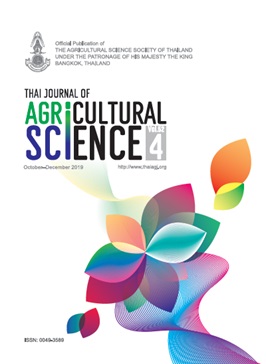Estimation for Stress Tolerance Indices of Rice Genotypes in Low Nitrogen Condition
Main Article Content
Abstract
To overcome the highly use of nitrogen (N) fertilizer, it should be obtained the low N tolerant rice lines. Therefore, the selections under the condition of low N have to be carried out. The objective of this on-station experiment was to identify desirable rice genotypes suited to limited nitrogen availability based on stress selection indices. Twenty-six rice genotypes were evaluated under low N and optimum N environments. The experiment was conducted at Muara Experimental Farm Bogor in wet season 2014 and used augmented design with three replications for check varieties under low N and optimum N conditions. Seven stress tolerance indices including mean productivity (MP), geometric mean productivity (GMP) tolerance (TOL), yield stability index (YSI), stress tolerance index (STI), and stress susceptible index (SSI) were computed and analyzed based on grain yield under low N and optimum N conditions. Analysis of variance showed significant variations due to genotypes for grain yield under two N conditions. Principal Component Analysis (PCA) showed that the first PCA explained 69.5.0% of MP, GMP, STI and TOL. PCA indicated that the first two components accounted for more than 98% of the total variations for low N tolerant indices. Positive and significant correlation of Ys and Yp with MP, GMP, and STI concluded that these indices were the best predictors of yield under low N and optimum N environments. According to MP, GMP, and STI genotypes code 1, 4, 5, 7, 8, 9 and 12 were the most tolerant genotypes under low N conditions. Genotypes no 1, 4, 5, 7, 8, 9, 14 and 26 were superior genotypes for both N conditions.


